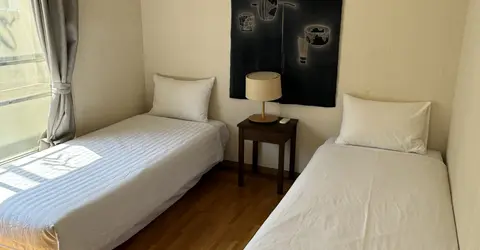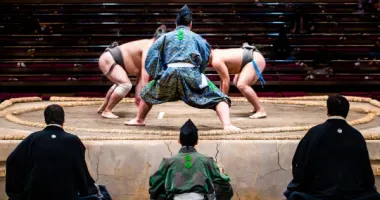Bank of Tokyo-Mitsubishi Money Museum
Bank of Tokyo-Mitsubishi Money Museum: read a guide to the Bank of Tokyo-Mitsubishi Money Museum in Nagoya which exhibits the history of money in Japan and the world.
Bank of Tokyo-Mitsubishi Money Museum 三菱東京UFJ銀行貨幣資料館
- Bank of Tokyo-Mitsubishi Money Museum Exhibits
- Bank of Tokyo-Mitsubishi Money Museum Access
- Nagoya Museums
- Japan Museums
The Bank of Tokyo-Mitsubishi Money Museum in Nagoya is a free museum that showcases the history of money in Japan and the rest of the world. The museum was previously located in the Fushimi district of Nagoya but moved to its present location in 2009.
Exhibits
 Bank of Tokyo-Mitsubishi Money Museum, Nagoya
Bank of Tokyo-Mitsubishi Money Museum, Nagoya
The Bank of Tokyo-Mitsubishi Money Museum has over 10,000 currencies on display.
The Bank of Tokyo-Mitsubishi Money Museum has videos in both Japanese and English explaining the history of money in Japan starting from the fuhon-sen, the oldest coin in Japan, discovered in the Nara region and the wado kaiho, first minted in 708, using technology brought from China.
 Money Changer's Shop, Bank of Tokyo-Mitsubishi Money Museum, Nagoya
Money Changer's Shop, Bank of Tokyo-Mitsubishi Money Museum, Nagoya Bank of Tokyo-Mitsubishi Money Museum showcases the history of money in Japan and the world
Bank of Tokyo-Mitsubishi Money Museum showcases the history of money in Japan and the world
During the medieval period of Japanese history, the most common coins were torai-sen, coins imported from China. However, with the development of mining technology, there was enough gold for Hideyoshi Toyotomi to begin the minting of the tensho oban, the largest gold coin in the world at the time and thought to be enough money for a samurai to live on for 40 years.
During the Edo Period (1603-1867), the Tokugawa regime circulated three types of coins made from gold, silver and copper. Locally, individual domains (han) issued hansatsu or paper money.
After the Meiji Restoration in 1868, the Meiji government had paper money printed in Germany before later issuing its own paper money.
The Bank of Tokyo-Mitsubishi Money Museum has re-recreated a tatami-floored Edo period money changer's shop with some lovely tansu and wooden money boxes.
Other exhibits at the Bank of Tokyo-Mitsubishi Money Museum include "shell money" - the oldest currency in the world from China, Greek and Roman coins, stone money from Yap Island and a one billion Mark ceramic coin from Germany in the period of high inflation post-World War I.
Also part of the museum is a collection of ukiyo-e wood block prints by Utagawa Hiroshige (1797-1858) from his famous "The Fifty-three Stages of the Tokaido" published by Hoeido.
 Bank of Tokyo-Mitsubishi Money Museum display cabinets
Bank of Tokyo-Mitsubishi Money Museum display cabinets Entrance to Tokyo-Mitsubishi Money Museum
Entrance to Tokyo-Mitsubishi Money Museum
Bank of Tokyo-Mitsubishi Money Museum Access
The Bank of Tokyo-Mitsubishi Money Museum is a little difficult to reach by public transport.
From Nagoya Station take a Key Route (基幹) #2 bus to Akatsuka-Shirakabe or a Kan-Meiki (幹名駅) Route #1 bus to the same stop.
The Bank of Tokyo-Mitsubishi Money Museum can also be accessed from the Sakae Bus Terminal in Oasis 21 by Key Route Bus #2, a Sakae Route Bus #14, or a Sakae Route Bus #12.
From Ozone Station, take a Kan Meieki Route #1 bus. Morishita Station on the Meitetsu Seto Line is about 10-15 minutes away.
Bank of Tokyo-Mitsubishi Money Museum
25 Akatsuka-cho, Higashi-ku
Nagoya
461-0026
Tel: 052 933 5151
Admission: Free; closed Monday and public holidays.
Hours: 9 am-4 pm
Related Articles
Japanese bank notes and coins
Banking and money in Japan
Bank of Japan





























